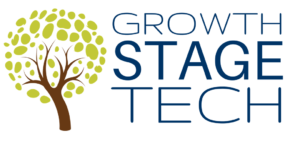
Last week I had the honor of attending the inaugural Women in Growth Stage Tech event in Chicago, and it was quite the experience. Designed to appeal to female founders of HR technology firms, the event drew nearly 50 attendees, including founders, investors, and practitioners. Sessions ran the gamut from how to work with investors to how to understand buyers, and many of the founders were asked to give their own short talks on lessons learned, competitive practices, etc.
Let me back up a bit and explain the significance of this event. According to TechCrunch‘s 2016 research, just 17% of startups have a female founder, and that hasn’t really changed since 2012, but it’s also worth noting that some of the companies represented last week were too new to even be on the radar for a firm like TechCrunch. Contrast that with what WIPP, Women impacting Public Policy, has to say:
Despite these challenges, women have been tremendously successful in business. Between 1997 and 2015, the number of women-owned businesses grew by 74 percent—a rate that’s 1.5 times the national average, according to the State of Women-Owned Businesses Report by American Express. Women of color are starting businesses at three times the rate. Today, women-owned businesses generate more than $1.4 trillion in revenues and employ 8.4 million people.
While these various pieces of data point are interesting facts, what I saw last week was something very different. It made this conversation tangible for me instead of something abstract. The value, the camaraderie, and the resource sharing in the group of female founders was incredible to behold.
Investor Takeaways
https://twitter.com/beneubanks/status/872464413856542720
InvestHER Ventures and Native Capital, two powerful investing firms, were present at the event. Representatives from each firm participated in a great session that outlined some key lessons for founders, including:
- Founders need to be the first investor in the business.
- For the investor pitch, enthusiasm is nice, but proof is going to matter.
- Investors are great not just for the funding, but for the network. One of the investors was able to get a connection to Groupon because of the network of contacts that existed within the firm, enabling the business needing the connection to be more successful.
- Investors are looking for proof and data, but they also size up the management/founder as part of their decision, which connects with one of our recent pieces on the topic.
The conversation also got very granular with the speakers offering advice on how to prepare a customer relationship management system and more, which was very valuable for the audience.
Additional notes below courtesy of InkFactory.
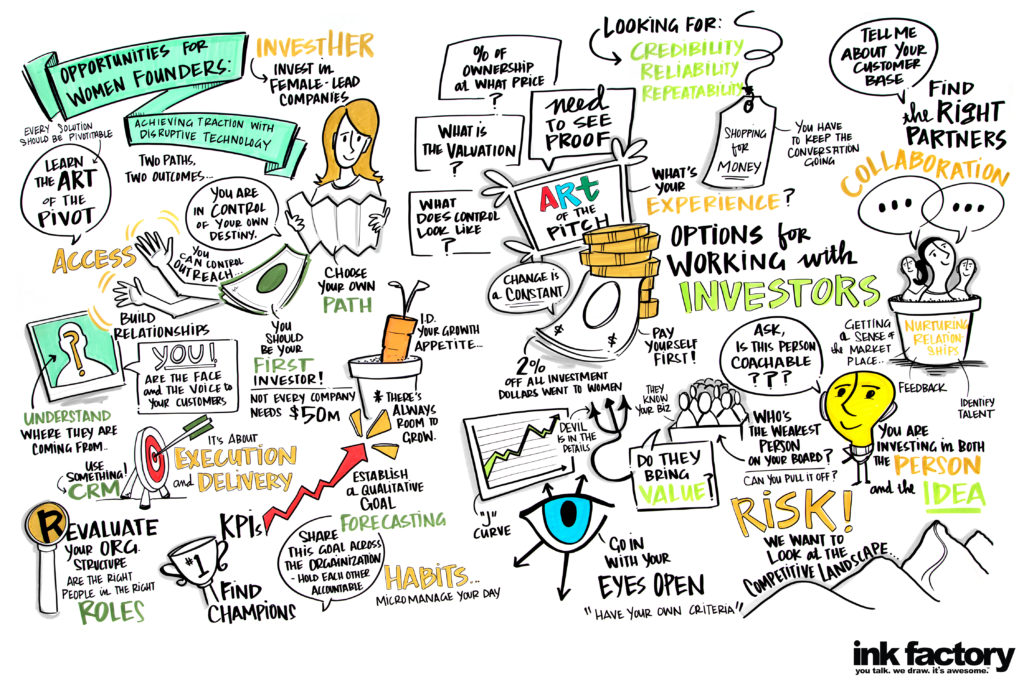
Marketing, PR, and Research for Demand Generation
@beneubanks @LindaGinac & @TheFigFactor talking about idetifying audiences for targeted research & demand generation #wigst17 pic.twitter.com/zoFUXDCPbP
— Angie Verros (@angieverros) June 7, 2017
I had the opportunity to facilitate a panel between Jackie Camacho-Ruiz of JJR Marketing (a PR and marketing firm) and Linda Ginac, Founder of TalentGuard, to explore how to use marketing, PR, and research to find and attract prospects. It was an incredible conversation and honestly I would have loved to have an hour with each of them to fully explore the depths of the strategies they use.
Linda talked about how a webinar-based strategy with key email campaign elements was highly successful for creating leads for the business. On the other hand, Jackie gave us some great tips on how to approach the press as an industry expert to get attention and traffic. Our third panelist was unable to make it for health reasons, so I very briefly touched on our approach at Lighthouse to using research to target and attract the right customer segments, but the majority of the conversation was focused on these two incredible ladies and the information they had to share.
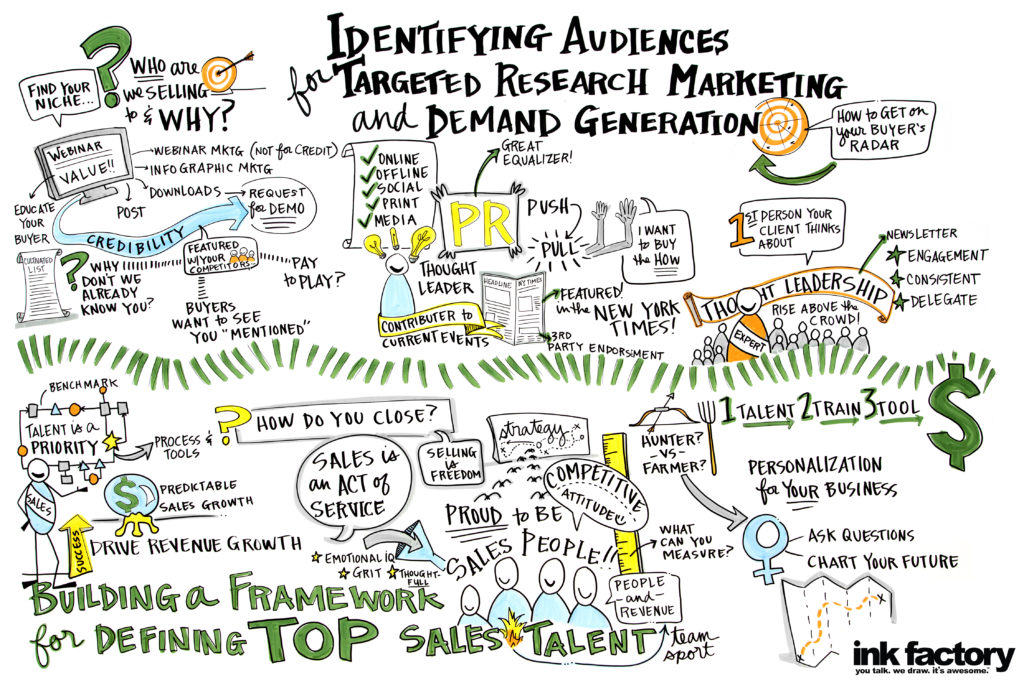
Founder Stories
https://twitter.com/beneubanks/status/872467758176497664
The entire event was pretty amazing, but one of the parts I and the rest of the attendees loved best was the Founder Learning Exchange. This portion of the event gave several of the founders a chance to step up to the plate and share some expertise with the crowd, whether around partnerships (Stacy Chapman of Swoop Talent), how to hire a sales leader (Maury Hanigan with Sparc), or how to engage with customers (Jen Grogono of uStudio). Personally I enjoyed hearing the stories, lessons learned, and the blunt honesty from these successful women.
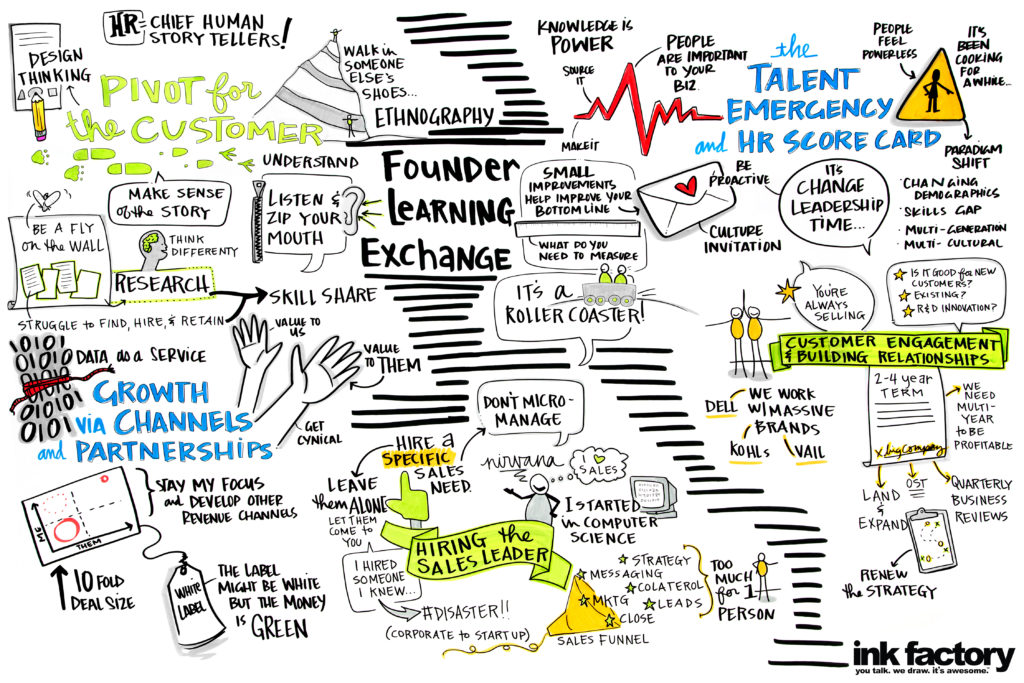
Hearing from Practitioners
One other interesting part of the experience was the buyer panel. Lynn Miller, creator of the event, brought in key HR leaders from ADP, CDW, and IBM to talk with the audience about how they make HR technology decisions, what they look for in a vendor, and how to approach these types of firms. There were amazing pieces of advice, including this one from Chris Havrilla of ADP:
If the buyer hasn’t thought about something in advance, they will blame it on the vendor or the technology if an unforeseen problem crops up or something doesn’t work out. It’s on you as the vendor to try and help them uncover those things before they become issues. Partner with them to match up with their processes. Really try to make them as a buyer successful and it will be a long term relationship.
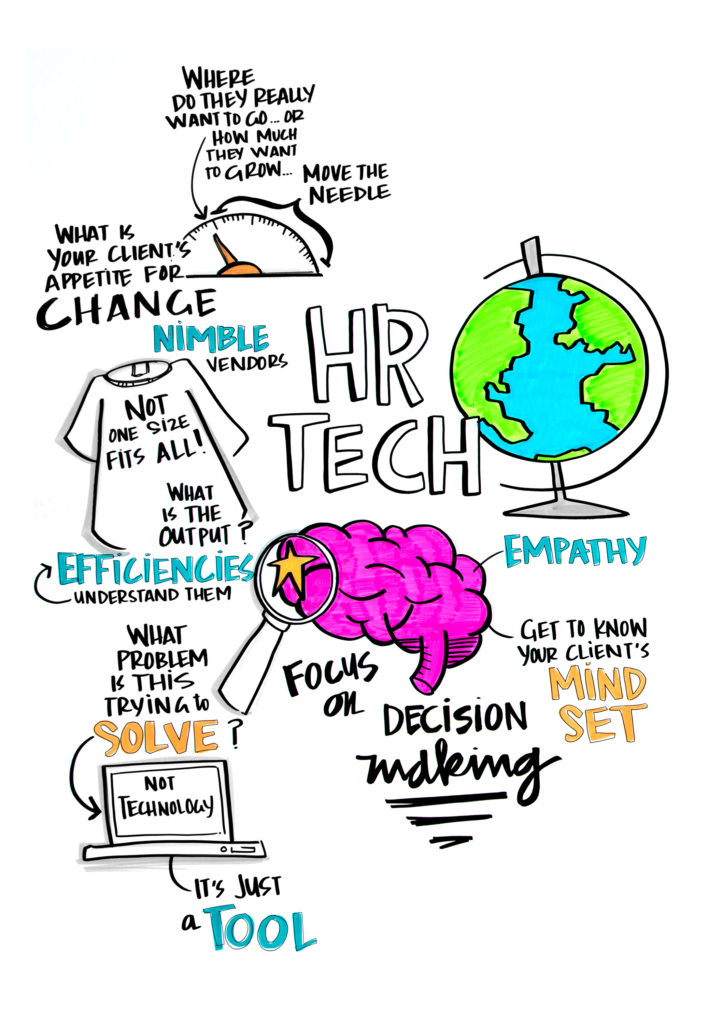
Conclusion
At the end of the day, the founder of the event made a bold statement. Her vision is to find or help grow 100 female-led HR tech firms with 100 customers each and an aggregated $1 billion in revenue by 2020. It’s an audacious goal, but also one that was met with applause by those in attendance. The plan is to continue with smaller, informal events as a way to maintain momentum and to continue bringing in practitioners, investors, and other female-led companies into the fold over time.

Ben Eubanks is the Chief Research Officer at Lighthouse Research & Advisory. He is an author, speaker, and researcher with a passion for telling stories and making complex topics easy to understand.
His latest book Talent Scarcity answers the question every business leader has asked in recent years: “Where are all the people, and how do we get them back to work?” It shares practical and strategic recruiting and retention ideas and case studies for every employer.
His first book, Artificial Intelligence for HR, is the world’s most-cited resource on AI applications for hiring, development, and employee experience.
Ben has more than 10 years of experience both as an HR/recruiting executive as well as a researcher on workplace topics. His work is practical, relevant, and valued by practitioners from F100 firms to SMB organizations across the globe.
He has spoken to tens of thousands of HR professionals across the globe and enjoys sharing about technology, talent practices, and more. His speaking credits include the SHRM Annual Conference, Seminarium International, PeopleMatters Dubai and India, and over 100 other notable events.

